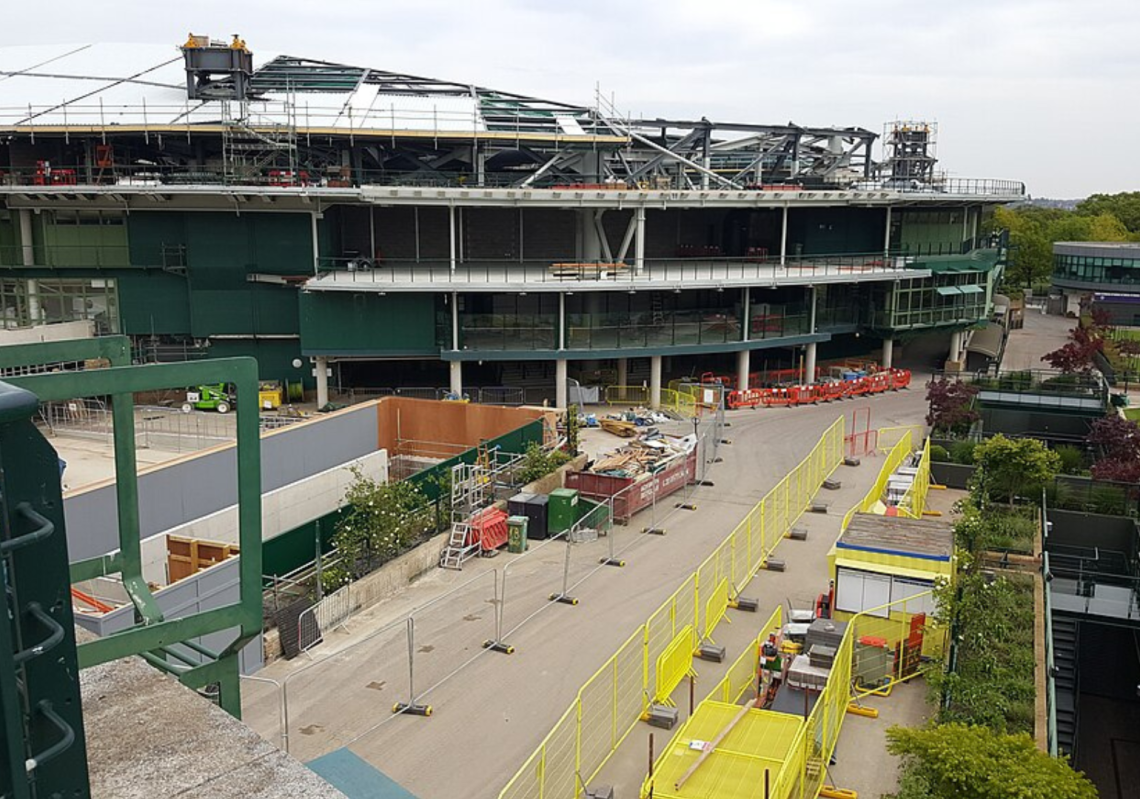Australian-raised Tanya de Hoog FIStructE CEng MIEAust, is 2024 President of the Institution of Structural Engineers, the world’s largest membership organisation dedicated to structural engineering, headquartered in London.
She described her effort revamping Wimbledon No.1 Court in London for the All England Lawn Tennis Club as a career highlight, saying the journey began years before the project’s 2019 completion.
“The win in itself, as well as the actual design work, and then seeing it opening – I don’t think I’ll ever top that,” she told create.
“Technically, I think it will be one of the most complex projects I’ve ever worked on.”
It has been large-scale projects like this one that have underpinned de Hoog’s career success, including Benfica Stadium in Lisbon, The Oval cricket ground in London and most recently long-span timber design in New York.

Her career has encompassed projects in South-East Asia, Europe, the US and Australia, all with the purpose of delivering innovative and beautiful structural designs that are both safe and sustainable.
After studying for her civil engineering degree at the University of Wollongong, de Hoog began a career in Perth before moving overseas. She was awarded an Interdisciplinary Design master’s degree from Cambridge University and now has a career that has extended for more than two decades and has seen her lead major structural engineering projects around the world.
She is looking forward to October’s Australasian Structural Engineering Conference, where she will appear as a plenary speaker.
“It feels like coming full circle after what will nearly be 25 years since I left Australia,” she said. “Having studied as an engineer here and worked for a short period of time, and then worked all over the world, it’s really nice to be invited back to speak about some of those experiences.”
De Hoog’s experience with the major projects she has led during that time is that all were the effort of an enormous number of people pulling together.
“When I first started working on large projects as a young engineer, the individual architect or engineer ultimately responsible for the project was most often credited as the designer,” she said.
“After decades of experience myself, while it is essential that leaders are responsible and recognised for this, at the same time every large project involves thousands of people, and we need everybody to bring the best of their skills and knowledge, their passion and their dedication to deliver this one big venue or particular building.”
She describes it as “the people element of engineering” – and ensuring her teams have clear goals and support have helped her deliver success in these major projects, such as the Wimbledon redevelopment.
“What I love particularly about sports stadia and events is you’re delivering to this particular event that just can’t be delayed,” she said.
“The Olympics in Athens or the Championships at Wimbledon – they’re not going to push that back. The deadline most often aligns people from all disciplines, blurring boundaries and enhancing collaboration in order to get this building designed and built.”
New and old
When it comes to securing large projects, de Hoog believes the people aspect of engineering is essential, because engineering is a relationship and trust-based profession.
She believes the achievement of winning a project and the work that has gone before it should be celebrated, as well as the design and its delivery.
“Winning the Wimbledon No. 1 Court project came through years of relationship development, combined with technical delivering of other stadia – just chipping away strategically in order to win more of those big world stage projects,” she recalled.
Undertaking the delivering of the project was no simple task either. The centrepiece of the work was a retractable roof for the stadium, which would allow play to continue even during rain.
“One of the biggest challenges is that it combines existing structure with new structure,” she said.
“The complexity with that is that when you’re putting something new on something existing, the two structures respond differently, because one’s been there for a long time and then you’re loading it up with these big loads that it hasn’t experienced before.”
One original component of the stadium that was preserved was its existing concrete seating bowl, which was designed in the late 1990s.
“The original engineers at the time had the foresight to design all of the vertical lift cores for additional residual vertical capacity, just in case they were ever going to adapt the building or put a moving roof on,” de Hoog said.
That foresight had significant implications for the sustainability of the project. The potential for future adaptive use is something contemporary engineers consider in their designs.
“How do we design buildings today that can be adapted in the future for uses we don’t even know about, or load cases we don’t even know about?” de Hoog asked.
“Here we have these engineers already thinking about that 30 years ago, so I think that it’s a great model for what we would have called good design of the past, allowing us to save something like 9000 t of embodied carbon – just by not demolishing the seating bowl and the foundations. Today we might call that positive climate action.”
Making a difference
This rigorous design reflects the social conscience that de Hoog believes engineering has at its core.
“Our professional and ethical obligations are to uphold public safety and protect the environment,” she said. “Engineers generally are so proud of what they do in terms of problem solving, and I think it’s our time to more actively celebrate our contributions and our essential profession and its place in serving humanity.
“We talk about the problems we solved, the structures we designed, and how we did it. Now I think it’s time for us to also talk about the positive impact we have and the outcomes we contribute to.”
Do you know a standout engineer helping to change the world? Nominations for the 2024 Engineers Australia’s Excellence Awards have now opened.



